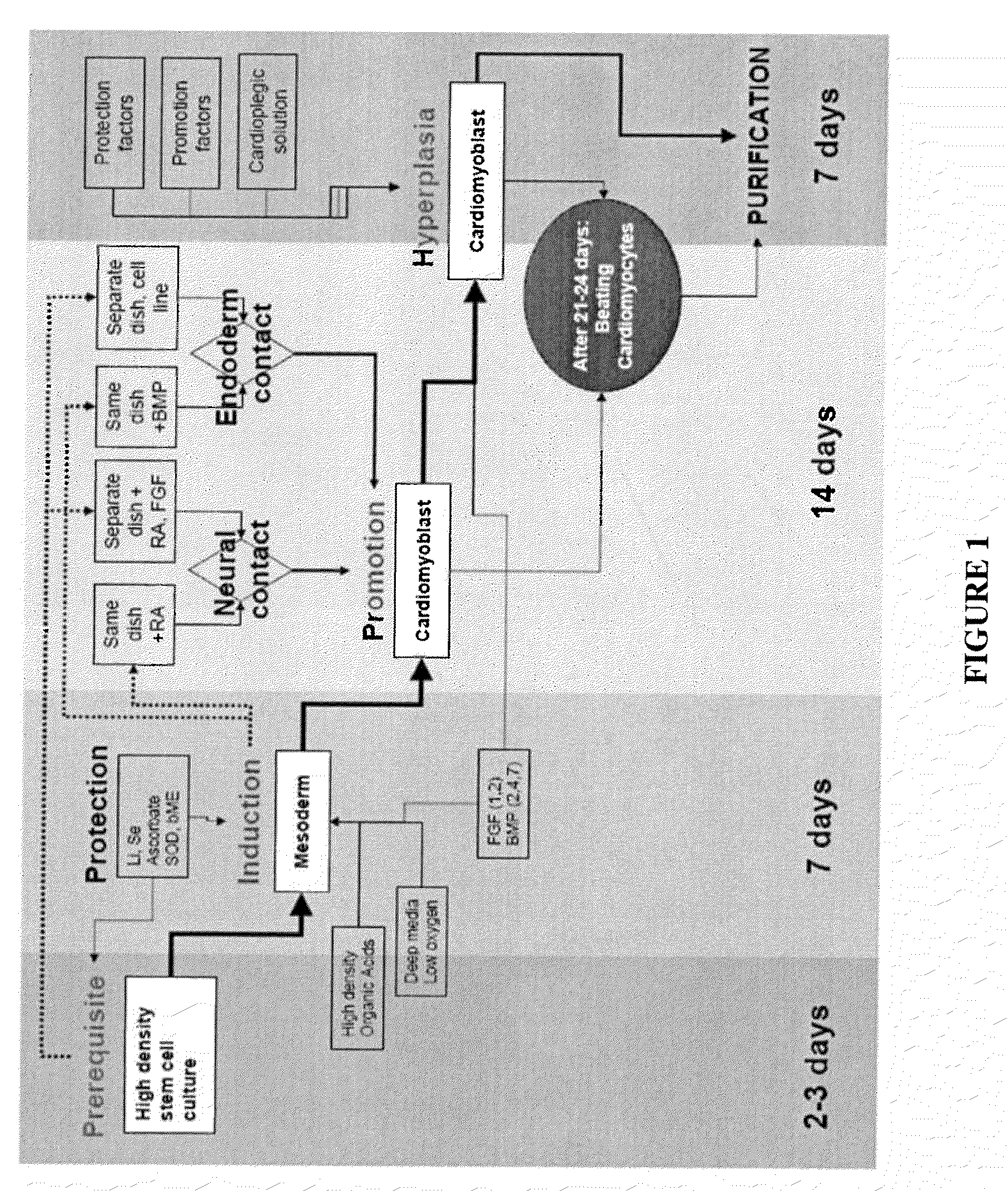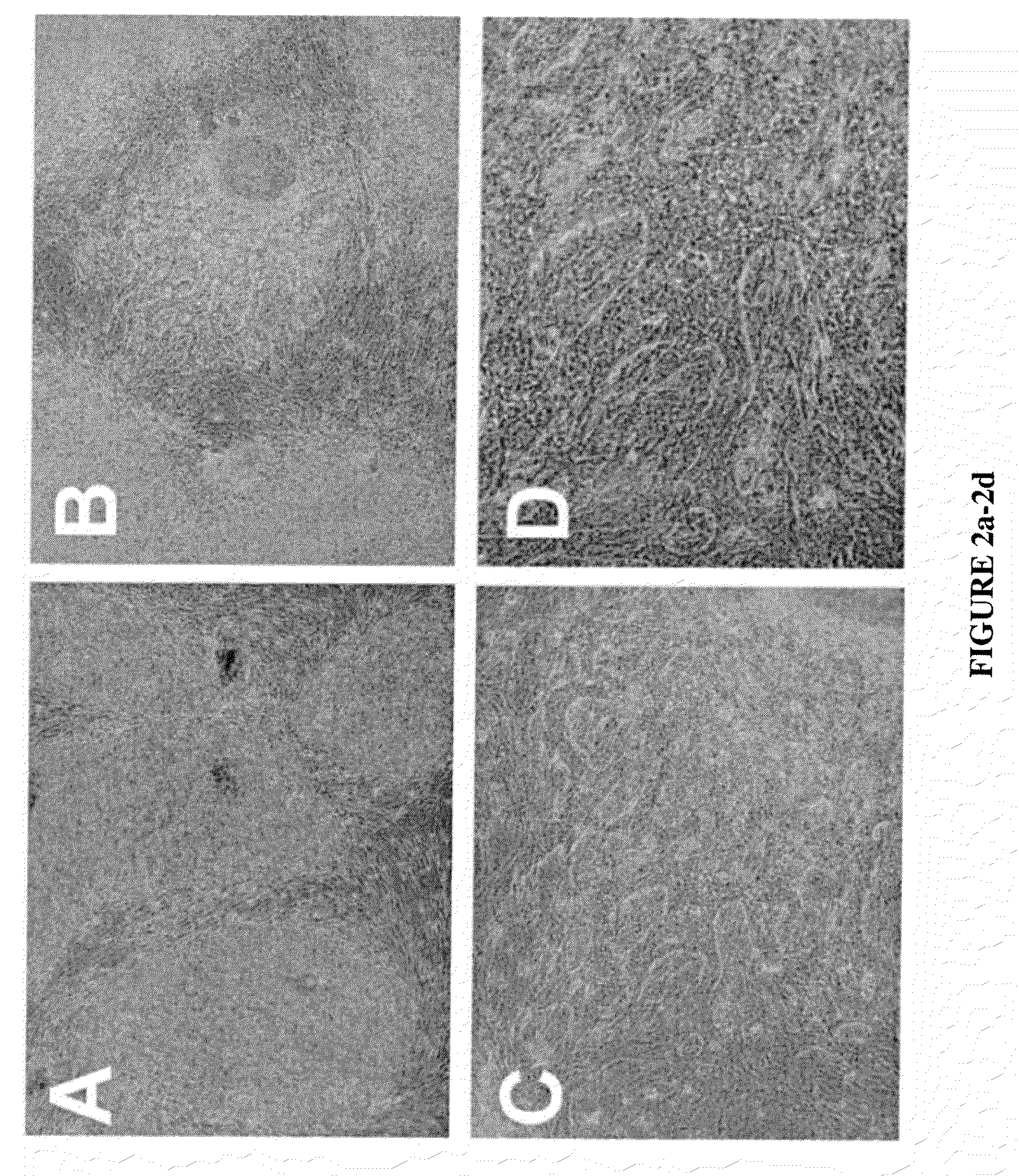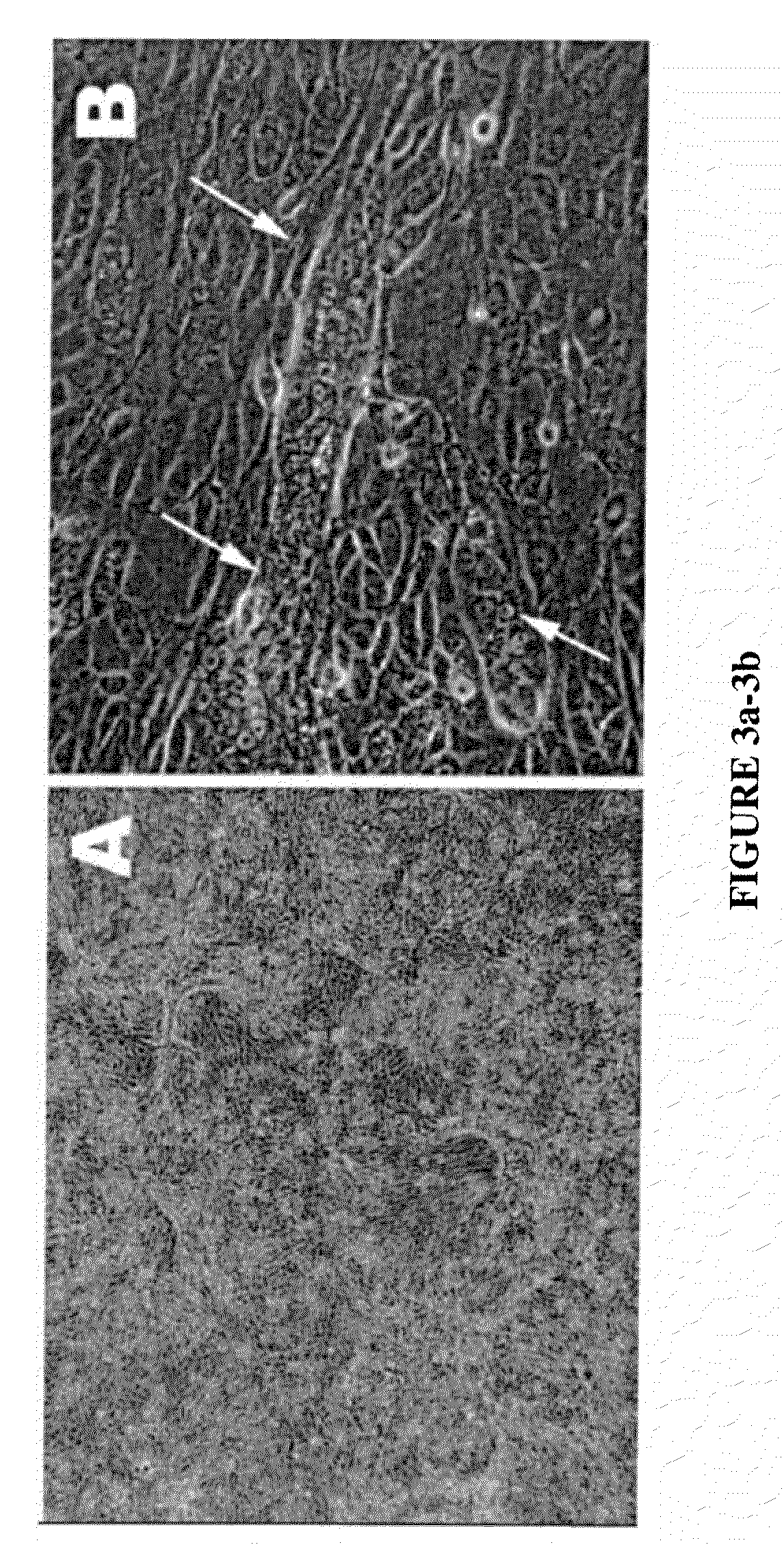Cardiomyocytes and methods of producing and purifying cardiomyocytes
a technology of cardiomyocytes and myocytes, applied in the field of cardiomyocytes and methods of producing and purifying cardiomyocytes, can solve the problems of insufficient nutrient, oxygen, carbon dioxide, etc., and achieve the effect of promoting cardiomyocyte formation
- Summary
- Abstract
- Description
- Claims
- Application Information
AI Technical Summary
Benefits of technology
Problems solved by technology
Method used
Image
Examples
example 1
[0087]This example is of an exemplary protocol for obtaining a mixed cardiomyocyte population.[0088]1 One passage before differentiation, stem cells are plated in deep dishes which can carry 1-3 cm of supernatant. Stem cells are fed according to hES cells protocols.[0089]2. Incubator set to 37-37.5° C., 2-5% O2 5-6% CO2 and 98% H2O. Stem cells are overgrown in the original plated dishes: deep dishes (5-10 mm of supernatant) for increasing media volume will ensure hypoxia and enough nutriments for cellular overgrowth. The culture will stabilize after 3-5 days of overgrowth.[0090]3. Day 1-3 addition of retinoic acid (RA) 5 mM in DMSO to final concentration of 5 μM[0091]4. Day 1 to the end of the protocol. BMP4 10 ng / ml[0092]5. Day 1 to the end of the protocol FGF −10 ng / ml[0093]6. Replace the media daily up to day 10 and than every other day[0094]7. At day 20-25 first colonies with beating clumps and typical morphology[0095]8. Day 28. The cells are incubated for 1-2 hour in a 50% card...
example 2
[0100]This example is of an exemplary protocol for obtaining early purified cardiomyocyte population.[0101]1. One passage before differentiation the stem cells are plated in deep dishes which can carry 2-3 cm of supernatant. Stem cells are fed according to hES cells protocols.[0102]2. Stem cells are overgrown in the original plated dishes until layering of the colonies is observed (by the yellowish color on the surface) and the media is increased in volume to ensure hypoxia and nutriments. The culture will stabilize after 3-5 days of overgrowth[0103]3. In a separate dish a pre-differentiated culture consisting of pax6 / nestin positive active dividing cells of 50,000 cells / cm2, will incubate overnight the CardioMedia. Next day the media is collected and filtered. The culture can be obtained from primary culture of neural stem cells or by differentiating human embryonic stem cells for 5-7 days in a serum free media which contains 10 uM of retinoic acid and 5 ng / ml FGF2 added daily at f...
example 3
[0111]This example includes a description of media compositions used in examples 1 and 2. Cardio Media includes DMEM:F12 LO, B27 supplement, MEM-NE Aminoacids 1×, Glutamax 1×, Ascorbic acid 20 μg / ml, thyroid hormones T3 / 4 20 ng / ml and insulin 10 ug / ml Cardioplegic solution includes THAM buffer (thrometamine) 0.3 Mol, KCl 10 mM, Puerarin 0.5 mM, L-Monosodium Glutamate Monohydrate 4%, L-Monosodium Aspartate Monohydrate 4%, Trehalose 0.25%, Lactic Acid 2 mM and Ascorbic acid 20 μg / ml. Resuscitation media includes Cardio Media, Puerarin 0.5 mM, Trehalose 0.25% and Superoxide dismutase.
[0112]Neural media includes DMEM:F12 high glucose, B27 Supplement 1×, MgCl 0.5 mM, insulin 10 ug / ml, selenite 5 ng / ml and transferrin 20 ug / ml.
PUM
 Login to View More
Login to View More Abstract
Description
Claims
Application Information
 Login to View More
Login to View More - R&D
- Intellectual Property
- Life Sciences
- Materials
- Tech Scout
- Unparalleled Data Quality
- Higher Quality Content
- 60% Fewer Hallucinations
Browse by: Latest US Patents, China's latest patents, Technical Efficacy Thesaurus, Application Domain, Technology Topic, Popular Technical Reports.
© 2025 PatSnap. All rights reserved.Legal|Privacy policy|Modern Slavery Act Transparency Statement|Sitemap|About US| Contact US: help@patsnap.com



